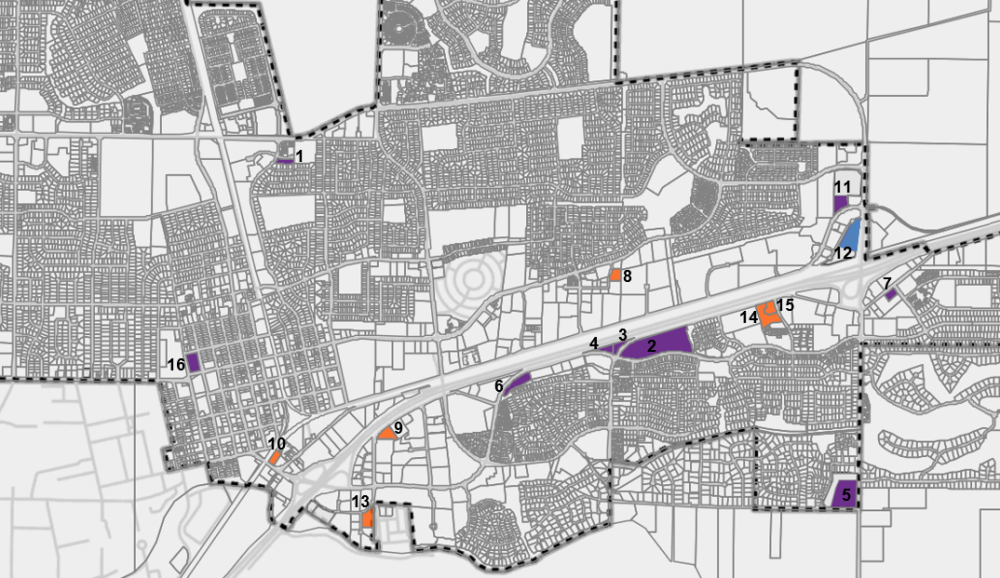

By David M. Greenwald
Executive Editor
Davis, CA – The Davis City Council will meet next Tuesday, December 5, for a public hearing on Version 3 of the Housing Element—which the state has twice sent back for revisions because it “does not comply with requirements under State Housing Element Law.”
The city, in the notice, states, “The proposed project does not include any actual physical development of housing identified in the Housing Element.”
However, “the City proposes to revise its site inventory to identify additional sites to accommodate the (revised) shortfall of 496 lower income housing units, as discussed in the Housing Element.”
The City also proposes to “rezone 16 sites and has identified a 753-unit capacity that exceeds the 496 dwelling unit shortfall requirement.”
The 16 sites would be zoned to a high density residential or mixed use, with a required 20 units per acre in order to meet density requirements.
At a November 8 Planning Commission meeting, the commission recommended that the City  Council approve the elimination of sites 3 and 4 from the list and that the designation for site 16 be Medium High Density Residential.
Council approve the elimination of sites 3 and 4 from the list and that the designation for site 16 be Medium High Density Residential.
That would mean taking 3425 Chiles and 3015 Cowell off the list and reducing the density of a proposal at the District Administration Building to medium density.

Davis is Not Alone in Challenges to Build Housing
While Davis has unique challenges to meeting its housing needs, particularly given the requirements of Measure J, it is not alone in struggling to meet its housing obligations.
San Francisco, it was reported last week, is “poised to miss the first deadline state housing officials have set for reforming how it approves residential development, a blown due date that could cost the city local control over how projects are entitled and permitted,” the Chronicle reported.
San Francisco was given 30 days in October to pass a “constraints reduction” ordinance, which would have allowed many projects to go forward without a hearing at the Planning Commission.
That deadline passed on November 27 and, as of publication, the Board of Supervisors had not taken a vote.
The Planning Director told the paper that “he anticipates that next week HCD will send a letter warning that the city is out of compliance with state housing element laws, under which San Francisco is obligated to plan to accommodate 82,000 units before the end of 2031.”
The city would then have 30 days to come into compliance or risk decertification of their housing element, which would put them into “builder’s remedy” status and allow projects to bypass all local planning review.
In addition, “The city could also lose out on money for affordable housing and transportation as long as its housing element is not certified.”
Meanwhile, in Berkeley, a report from CoStar News, reported, “The neighborhood surrounding the University of California, Berkeley, campus could face significant changes as officials in the East Bay city seek to address a worsening housing shortage by tweaking the local zoning code to allow for taller buildings.”
Their council approved planning code changes that will allow for developments as high as 12 stories.
That would clear the way for upward of 2650 units to be constructed near the university.
In Davis, a proposal for seven stories at the University Commons proved too controversial.
Berkeley was looking at this legislation to address “Berkeley’s housing crunch that officials say is caused by too little supply and increasing affordability challenges for the past several decades.”
Berkeley finds itself in a crunch because, over the last five years, only 1300 units have been completed despite being “one of the more active periods in Berkeley’s development history.”
CoStar reports, “Fewer than 725 units are now moving through various stages of the city’s development pipeline, far below the amount needed to keep up with the more than 10% population gain the city reported in the years since 2010.”
They add, “The city’s dire housing shortage has fueled pricing hikes, and with the university providing housing for less than 25% of its student population, demand for alternatives in the area has added even more pressure to an area already commanding some of the highest rents in the nation.”
CoStar further notes, “A typical apartment in Berkeley commands an average of about $2,700 per month, according to CoStar data. However, properties near the university campus can go for as much as 50% more than those near the city’s borders.”

